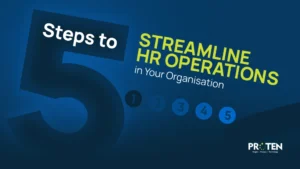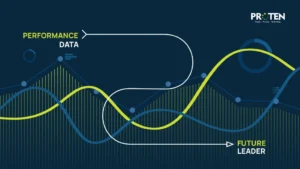As Q3 approaches, the window to course-correct and drive impact in the second half of the year is shrinking. The truth? Most teams don’t need more meetings, instead, they need clarity, alignment, and accountability. And that’s exactly where performance appraisals come in. Far from being a checkbox exercise, a well-timed mid-year review can realign expectations, reignite motivation, and reshape your team’s trajectory heading into Q3.
According to Gallup, only 14% of employees strongly agree that their performance reviews inspire them to improve. That means the bar is low, but the opportunity is massive. When done right, mid-year appraisals do more than assess, they activate.
So how do you harness that momentum? This blog breaks down the smart strategies that actually move people. Let’s get into it.
1. Start with the Why: Reconnect Everyone to the Bigger Picture
Before you talk about what’s been done or what needs fixing, zoom out. Mid-year performance appraisals are the perfect moment to remind your team of why they do what they do. Because somewhere between back-to-back meetings, Slack pings, and missed deadlines, people forget, but you shouldn’t let them.
Use this moment to restate the company’s mission, not as a corporate poster, but as a living, breathing reason to show up every day. Tie it to real stories, real wins, and real struggles, reminding your team how their role fits into the larger ecosystem of progress.
This has nothing to do with motivational speeches. It’s about anchoring people in purpose. When someone understands how their contribution fuels the team, the department, and the business, they don’t just work harder, they work smarter and become invested.
Ask questions like:
- What part of the company’s mission resonates with you right now?
- Which recent project made you feel most connected to the bigger picture?
- Where do you feel your impact is strongest?
These questions serve as re-centering tools you can use to help your employees find meaning and align.
2. Shift from Judgement to Growth
Traditional appraisals feel like judgement day, perhaps because of the awkward meetings, vague praise, and thinly-veiled criticisms. Let’s not pretend that’s helpful because if anything, it kills trust and encourages people to hide instead of grow.
It’s up to you to shift the energy. Mid-year performance appraisals should feel like strategy sessions and not a court hearing. You’re not handing down verdicts, you’re building roadmaps and co-creating a plan for the next six months, grounded in honesty and possibility.
This means you don’t just point out flaws, you dig into what’s behind them. Is it a skill gap? A workload issue? A toxic cross-functional team dynamic? Get curious before you get critical.
Also, spotlight strengths with the same energy. According to Gallup, employees who receive regular, strengths-based feedback are 12.5% more productive than their peers. So no, it’s not soft to focus on what someone does well, it’s smart and strategic.
Try reframing your language, for example:
- Instead of “You need to communicate better,” try “I’ve noticed you shine in one-on-ones. How can we help you bring that same clarity to group settings?”
- Instead of “You missed the mark here,” try “What got in the way? What would have made success more possible?”
Mid-year appraisals should feel like safe, brave spaces instead of a judgment panel. The goal isn’t to shame but to sharpen.
3. Get Tactical: Use Performance Appraisals to Map the Path to Q3
This is where the real shift happens. Once you’ve reconnected to purpose and unlocked honest dialogue, it’s time to get surgical. What are the most important priorities for Q3? What’s non-negotiable to hit the ground running?
Mid-year performance appraisals should turn into Q3 war rooms. This means pulling up dashboards, reviewing goals, and auditing what’s been working and where momentum is lagging. Then, chart a clear, collaborative path forward.
This strategy goes beyond setting individual goals and focuses on creating a tightly woven web of accountability where everyone’s objectives feed into a common direction. If one person’s output is another’s input, make those dependencies known and make them matter.
Ask questions like:
- What does success look like for you by the end of Q3?
- Where do you need clarity or support to hit that goal?
- Which goals no longer make sense and need adjusting?
When performance appraisals become strategy sessions, your team doesn’t just leave with feedback. They leave with a game plan.
4. Tailor the Conversation: One Size Does Not Fit All
Too many managers don’t put much effort into personaliszation, treating it instead like a check-box or doing it half-heartedly. Copy-pasting the same set of talking points across every appraisal is not just lazy, it’s damaging. This is because your top performers, underperformers, quiet steady hands, and new hires all need different things from you.
Your high achievers want challenge, autonomy, and recognition that doesn’t feel like lip service. Your struggling team members need directness wrapped in care. They need a reset, not a passive-aggressive pep talk. And the ones who fly under the radar? They need you to notice them, too.
To use your time wisely. Dig into:
- What excites them about the second half of the year?
- What’s holding them back, that they haven’t said out loud?
- How do they define success, and how can you meet them there?
Performance appraisals should reflect the humanity of the person in front of you. Speak to who they are, not just what they’ve done.
5. Don’t Let it End in the Room
The meeting is not the milestone, but what happens after the appraisal is what matters most.
Too many managers walk away from a solid mid-year conversation and then disappear without any check-ins or follow-throughs until Q4 creeps in, and that’s how momentum dies.
Don’t just assign goals, build a cadence. Schedule follow-ups, track progress, celebrate micro-wins, and keep the conversation alive. Let your team know you’re paying attention, not because you’re micromanaging, but because you care. Accountability is not a burden when people feel seen.
Mid-year performance appraisals should be the spark. But it’s the steady flame of intentional leadership that turns that spark into results.
Final Thoughts…
To be clear, mid-year performance appraisals aren’t just another HR obligation. They’re your best shot at recalibrating your team before Q3 takes off. Approaching it with intention helps you ensure your conversations can align scattered priorities, unlock fresh motivation, and reestablish the trust that real progress depends on.
This is your moment to step back, re-center, and relaunch. Not with vague compliments or recycled feedback, but with bold clarity, mutual ownership, and a shared commitment to what comes next.
If you want your team to finish the year strong, this is where it starts.
Looking to take your next performance appraisal to the next level? Check out our blog: 100 Powerful Performance Review Questions to Boost Team Performance. It’s packed with real, insight-driven prompts that help you ditch the fluff and get to what matters most.










